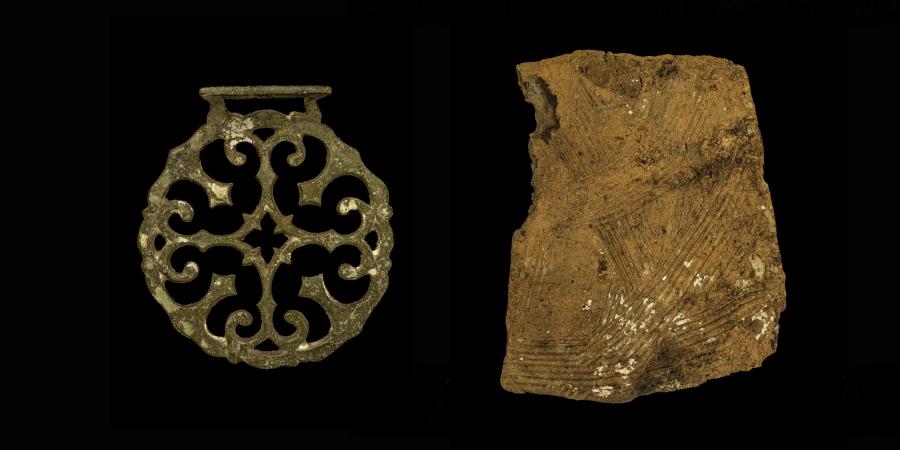About Braidwood School
Braidwood School for the Deaf is an 11-18 high school based in Birmingham. Our learners come from across the West Midlands region and wider area. Our school values are honesty, respect and effort. The four Year 9 learners who were chosen for the Lost and Found project enjoyed a fantastic experience, meeting historians and archaeologists, debating which artefacts to select for the museum, asking questions, finding out about heritage and culture, making links to other subjects, and the world of work. We also enjoyed reflecting on our own personal identities as part of the process. We can’t wait for the next Wessex Archaeology Adventure!
The Braidwood School group have kindly given permission for us to share their images and artworks created created as part of these sessions.



"I listened and learned lots of information about the objects and it was interesting."
"want to know more information about them in every detail."
"Interesting because it look pretty good going on because they has found rare items from history but I have never seems them before in museum so lots of explanation to me."


"I think I learn some of 3D scan and Romans tied of building."
"I have enjoyed and learning about past and how it works."
"I really enjoyed it of 3D Scan, known of your artificially item. And know other pupils important."



"I really enjoyed to part of your company."
"I enjoy it it was fun thing to do and learning about people saying."
"The company was so lovely because they respect our community and trying with deaf people and it really amazing."
The Braidwood School group have selected two objects from our archives to go into this online museum. Please do explore the objects below, we hope you enjoy them.
19th - 20th century horse brass
A 19th - 20th century horse brass recovered from the site of a building to the rear of the Red Lion public house at Houghton Regis, Bedfordshire. Decoration on horse harness is known from when horses were first domesticated and worked in harness, and decorations often acted as talismans to ward off “the evil eye”. Horse brasses as we know them today were probably first introduced to Britain by Romanies who arrived in the 18th century, and soon became commonplace, being used by all classes of society from the gentry, who used brasses and harness fittings with their family crests, to the carters on the farms, to large companies, such as the railways and breweries who would use their company name or logo.
Romano-British voussoir tile
A fragment from a tapered hollow voussoir tile, recovered from a site near Amesbury. These hollow tiles would have been used in a vaulted roof, almost certainly in a bath house. These tiles would have sat on top of rectangular hollow tiles known as box-flue tiles and then crossed the gap between walls to form a vaulted ceiling. This would allow heat to circulate across the ceiling, to keep it warm, and to prevent condensation droplets falling on to the bathers below.
Return to the Lost and Found Museum home page
